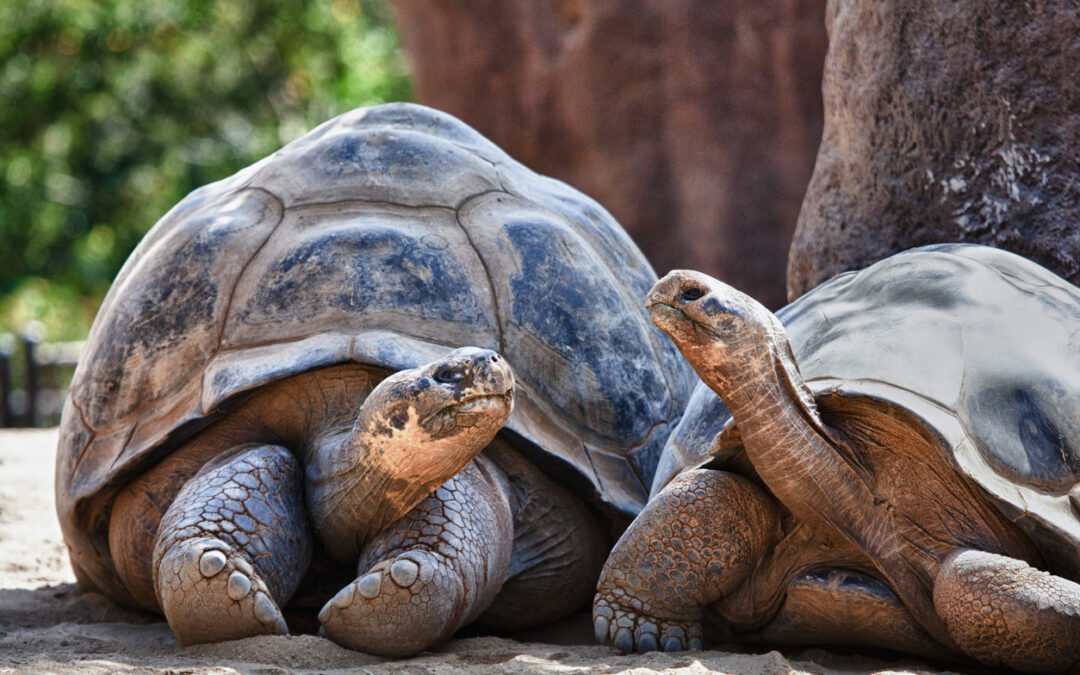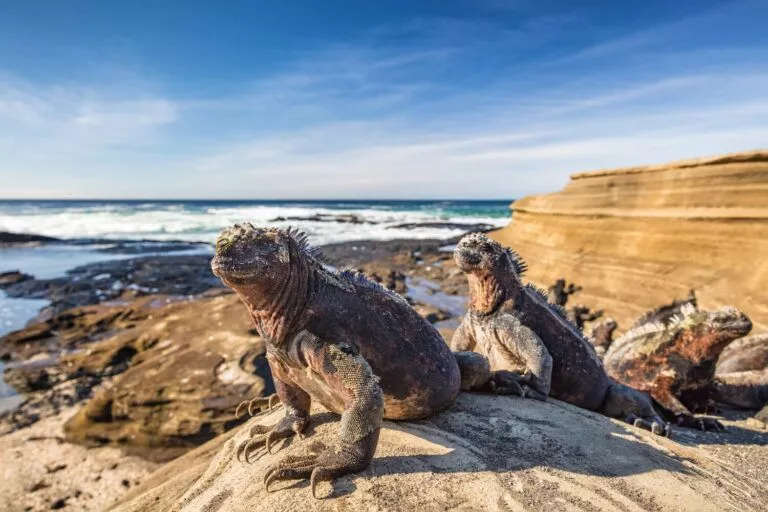The Galapagos has long been synonymous with once-in-a-lifetime adventure, so it was a no-brainer to add to the My1FitLife Adventures lineup (in fact, this is our second trip)! Our six day trek includes several of the archipelago’s famed island’s that have fascinated photographers, scientists, and thrill-seekers for centuries. You’re sure to come away with a camera (or smartphone photo app) chock-full of some of the most incredible and bizarre species on the planet.
However, before you eagerly pack your bags and arrive six hours early to the airport, there are a few important details you will need to heed in order to get the most out of this truly incredible adventure.
Water—lots of it. The Galapagos comprises 13 larger islands, 6 smaller islands, plus dozens more micro islands and almost-island-sized rocks. All of which is to say you will be around water at all times throughout your adventure. Comfort and confidence in and around the water is necessary…not just for your safety, but for your enjoyment and fulfillment on the trip.
Furthermore, wildlife rules, both on and off the shore. With that in mind, almost every rule, guideline, fee, or other measure we cover was established for the preservation of this spectacular place and its animal inhabitants.
Please be advised that we will not only be swimming, but swimming with marine wildlife. You’ll have the opportunity to swim alongside manta rays, turtles, dozens upon dozens of species of fish, and more. If a water-filled adventure—complete with the opportunity to swim with wild, protected marine species—sounds like it might be stretching too far outside your comfort zone, please consider a less water- and wildlife-intensive My1FitLife Adventure from our page!

Traveling to the Galapagos
Before you’re snapping photos of tortoises and blue-footed boobies, or before you’re even on the islands at all, here’s what you need to know to begin your trip to Ecuador (who else thought the Galapagos was its own country?!).
Passports
Travel to Ecuador requires a passport from your country of nationality, valid for at least 6 months after your return. You will present your passport at customs upon arrival in Ecuador, where you will have your passport stamped. In order to enter the Galapagos Islands, you must produce that Ecuadorian passport stamp.
Entrance Fees
A trip to the Galapagos requires additional fees, regardless of your stay length or purpose.
When you land at the airport in Baltra (one of two Galapagos airports), you must pay a $100, CASH ONLY entrance fee. This fee is required to visit the islands and is put towards their preservation and upkeep. There is no way to pay this fee in advance or with any other payment tender other than cash.
Furthermore, before you board your plane to Baltra, you must visit the Transit Control booth at either the Quito or Guayaquil airport (whichever you will fly to Baltra from) and pay $20 (CASH ONLY*) for a Transit Control Card (TCT). This card is required for all entrants to the Galapagos; you must present your plane ticket to that destination in order to purchase the card. Upon your return from the Baltra airport, you will return your card. This allows Transit Control to monitor passage to and from the islands, and, most importantly, to prevent unauthorized immigration.
*Please note that while there is a way to preregister for your TCT card in advance online that this method A) does not allow you to prepay for the card and B) is not advisable for My1FitLife Galapagos Islands Adventure travelers as it requires an accurate list of your hotel reservations and dates, which may still be in flux when you fly.
U.S. Embassy
There is a U.S. Embassy in Quito, Ecuador’s capital. Additionally, you can find further information for U.S. travelers (in case of emergency) here.
COVID-19
While it’s best to be prepared—and while we might recommend you stay up-to-date on COVID-19 vaccinations and/or negative tests for your own safety—Ecuador no longer requires either a vaccination against, or proof of a negative test for, COVID-19.
Health & Safety
Over-exposure to sun, mosquitos, and unfiltered drinking water are all real threats while traveling in Ecuador and the Galapagos. To prevent excessive sun exposure, pack a hat along with plenty of sunscreen. Remember that the Galapagos is part of Ecuador, a country named for its stretch over the Earth’s equator. Not only does the destination guarantee 12 hours of daylight year round, its prime location is particularly sun-exposed.
You should also bring a water bottle to stay hydrated. We recommend either a bottle with its own filter, or that you purchase an independent filter. Most hotels and restaurants will provide you with either filtered or bottled drinking water, however do note that unfiltered water in Ecuador is unsafe to drink.
While mosquitos are less prevalent on the islands, they, and accompanying malaria, remain a real threat. In addition to plenty of mosquito repellent as well as a mosquito net, you might consider a preventative medication—such as Malarone—to preemptively combat any chance of catching malaria.
Finally, bring either a universal outlet adaptor or an adaptor to outlet types A and B…preferably with a surge protector.
Money
Ecuador’s official currency is the U.S. Dollar and ATMs are a-plenty around town. That said, ensure you have some cash on you at all times, as you will find yourself in areas that offer neither ATMs nor credit-card friendly payment portals (which are most portals away from Ecuador’s mainland).
Interacting with Locals
Tipping is not taboo in Ecuador, nor is it required. In any case, your best bet is to tip your guides and waiters to show appreciation. Much as in the U.S., the bulk of most hospitality professionals’ salaries come from tips!
On the (Protected) Galapagos Islands: Dos and Don’ts
The Galapagos Islands were Ecuador’s first national park, as well as the world’s first UNESCO heritage site, for good reason. Thanks to a naturalist called Darwin, the archipelago has practically become synonymous with its vast biological diversity and scientific importance. In order to preserve the abundant natural beauty—that has been astoundingly well maintained—there are certain rules to visiting the islands that must be followed.
With that in mind…
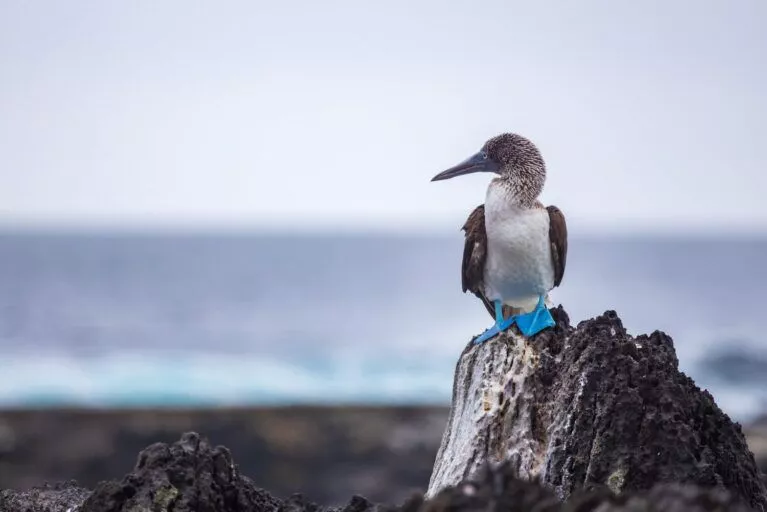
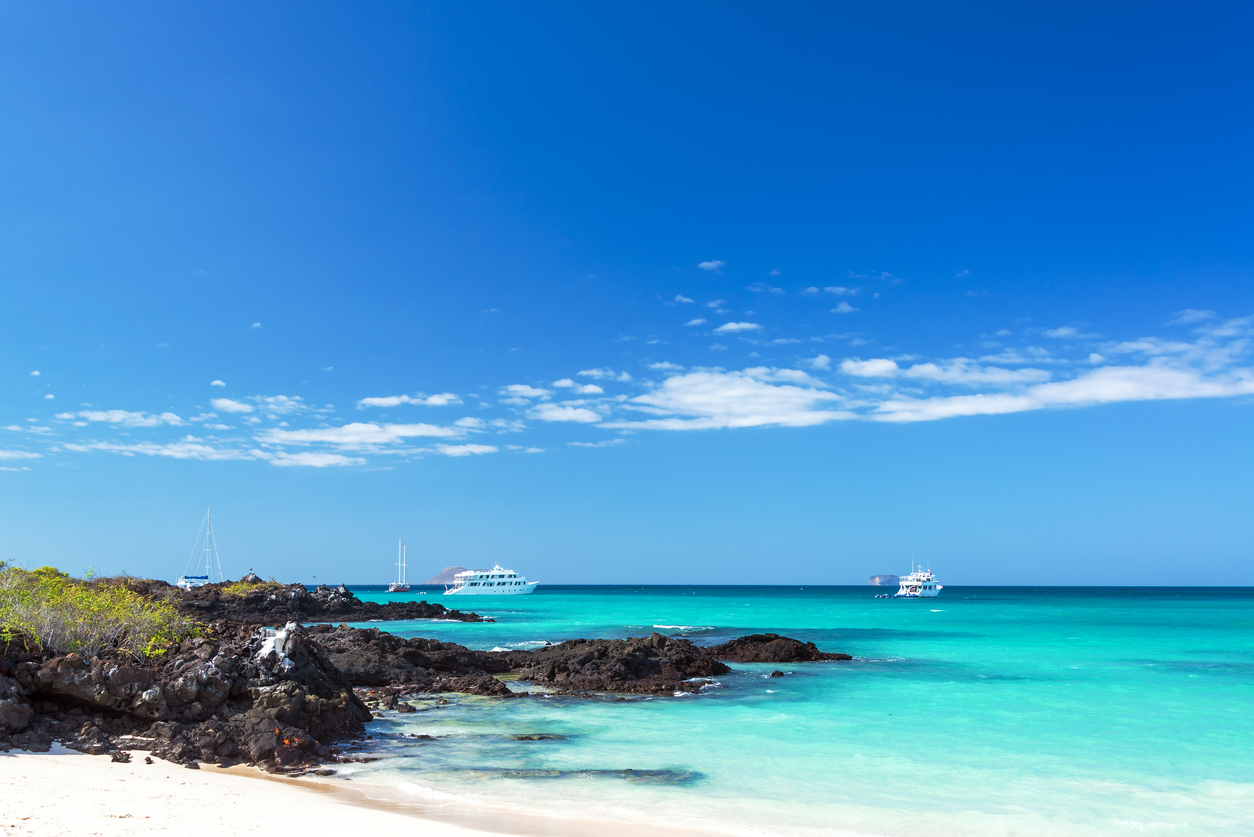
Protected Areas
Some parts of the Galapagos are open to anyone; some require special guidance, AKA an authorized guide. Stay with the My1FitLife Adventures group and guide. Do not wander alone into any specially-protected or otherwise restricted areas.
Safety
The Galapagos Islands are generally safe. However, anytime you enter the natural habitats of wild animals, you are taking a certain degree of risk. Heed your guide’s instructions and warnings at all times. When in doubt, always remember: you are in the presence of wild animals.
Galapagos Rules
Remain on marked trails at all times.
Respect all signs and other rules as posted.
Remain at least 6 ft away from any animals, even if they approach you.
Do not use flash photography when taking photos of animals.
Don’t chase. See above, these animals are wild and you’re in their habitat. Be respectful and practice practical safety at all times.
Do not feed the animals. The vast majority of the Galapagos fauna is endemic—indigenous—to the area, and many of them are either protected or completely unique to the islands. Introducing anything into the animals’ diets that’s not supposed to be there could have—no joke—disastrous consequences.
Don’t litter or pick flowers/other plants. You are in nationally preserved, wild habitats. Best to leave them as you find them, and considering the highly protected status of the Galapagos, doing otherwise could result in legal implications.
Do not take any banned substances away as a “souvenir”. Banned substances include black coral, shells, lava rocks, parts of animals, indigenous vegetation, and more. See above, legal consequences may arise if you’re found to be smuggling any of these items out of the country.
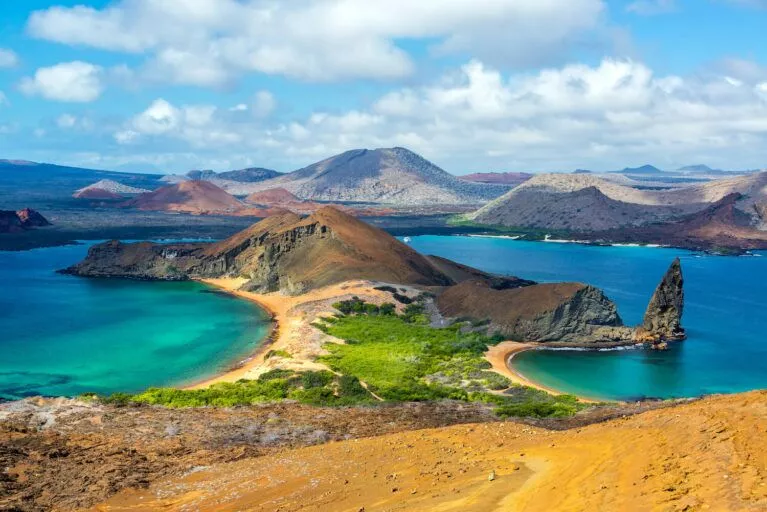

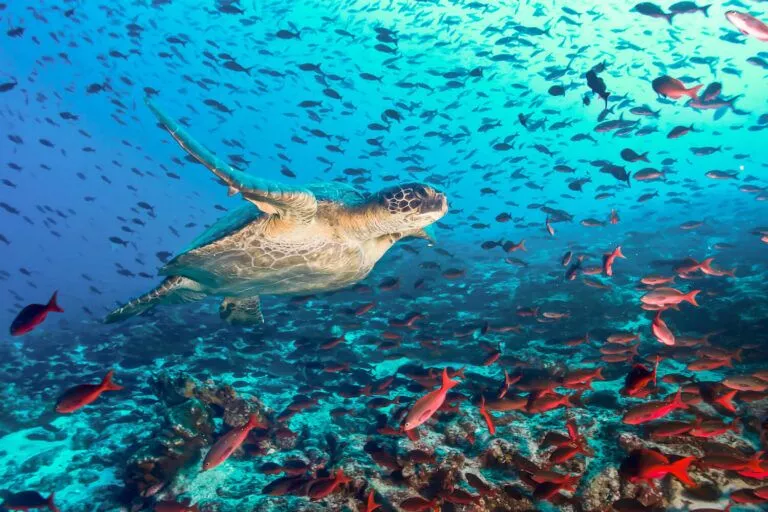

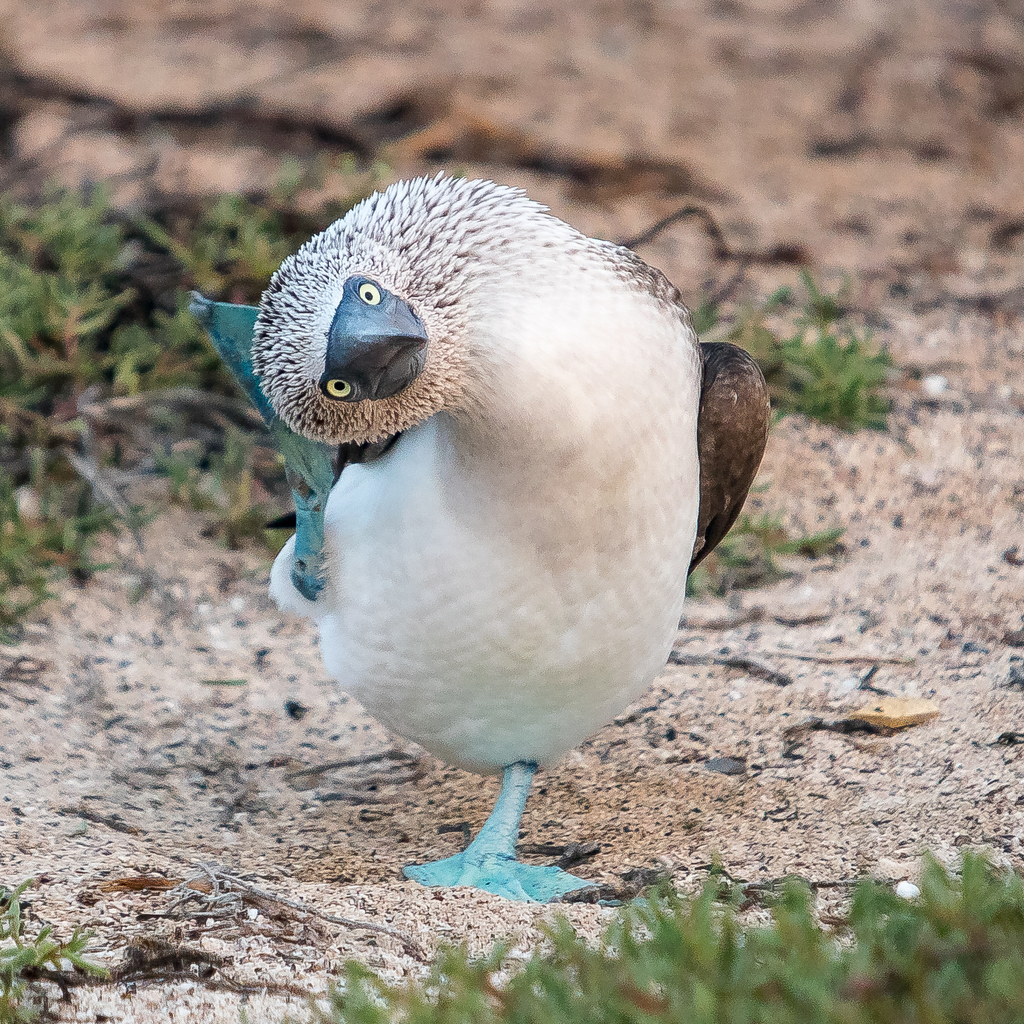
Packing
Don’t overpack. Luggage on flights to and from Baltra airport is limited to: 1–2 checked bags weighing no more than 44 lbs combined and 1 carry-on bag weighing no more than 17 lbs. Our golden rule is if you pack it, you carry it. Michelle, Keith, and your other adventure guides will be unavailable to help you with your luggage.
Our My1FitLife Galapagos Islands Adventure occurs in May, just after the region’s hottest, winter season (January–April). But just because it won’t be hot doesn’t mean bring a down coat. Expect temperatures in the range of 70 to 85º Fahrenheit.
Plan to bring lots of lightweight layers and breathable fabrics in addition to swimsuits, rain wear, as well as both sturdy hiking shoes and sandals. You might also consider throwing in a pair of water shoes. Additionally, don’t forget the sunhat, sunglasses, and lots of sunscreen (see above—we’ll be practically as close to the equator as it gets!).
Bring a good camera or smartphone for pictures. Trust us, you’ll want as many shots as you can snap. Regardless of what equipment you bring, make sure you know how to use it before the trip. You should be ready to snap a few pics with less than a moment’s notice! Upfront knowledge of your camera’s functions is key to making the most of your experience.
Finally, you might consider bringing a dry or waterproof bag to keep your camera, phone, etc. securely non-moist.
Preparation is key for anything, and never is that more true than on your unique, My1FitLife Galapagos Islands Adventure! That said, the most important measure you can take is to be flexible, above all. Current conditions change, the weather changes, plans change, travel arrangements change. The more you can go with the flow, the more you’ll get out of this bucket list experience!
My1FitLifeAdventures is dedicated to bringing travelers not just another group trip, but a trip that pushes them outside of their comfort zones and challenges their world perspective. We are determined to bring you life-changing experiences that don’t just allow you to relax, but rather equip you with the tools you need to handle the day-to-day when things get tough. Our holistic approach to nature and adventure will leave you with a stunning new outlook on life.

